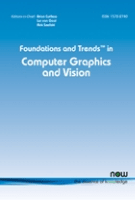
Foundations and Trends in Computer Graphics and Vision
Scope & Guideline
Transforming Ideas into Visual Realities
Introduction
Aims and Scopes
- Interdisciplinary Research in Computer Graphics and Vision:
The journal encourages research that bridges various disciplines, integrating concepts from computer science, psychology, and design to enhance the understanding and application of computer graphics and vision. - Advancements in Deep Learning Techniques:
There is a strong emphasis on the application of deep learning methodologies in computer vision tasks, including image restoration, segmentation, and multimedia forensics, highlighting the journal's focus on cutting-edge technological advancements. - User-Centered Design and Evaluation:
Research that focuses on improving user studies and experiences in computer graphics and vision is a core area, reflecting the journal's commitment to practical applications and user interaction. - Comprehensive Reviews and Surveys:
The journal publishes extensive reviews and surveys that consolidate knowledge in specific areas, such as object segmentation and multimodal models, providing a foundational understanding for researchers and practitioners. - Emerging Technologies and Applications:
The journal also aims to explore and report on emerging technologies in computer graphics and vision, including computational imaging and neural data compression, indicating a focus on future trends and applications.
Trending and Emerging
- Multimodal Foundation Models:
The emergence of research on multimodal foundation models highlights the trend towards creating general-purpose AI systems that can understand and generate content across multiple modalities, such as text and images. - User Studies and Human-Centric Research:
There is an increasing focus on improving methodologies for user studies, indicating a trend towards prioritizing user experience and engagement in computer graphics and vision research. - Neural Data Compression:
The rising interest in neural data compression underlines the importance of optimizing data storage and transmission, particularly in the context of multimedia applications, reflecting current technological demands. - Deep Learning Applications in Vision Tasks:
Recent papers demonstrate a growing trend in the application of deep learning techniques to various vision tasks, including image/video restoration and segmentation, indicating a robust shift towards AI-driven solutions. - Cross-Disciplinary Approaches:
There is a noticeable increase in research that combines insights from various disciplines, reflecting a trend towards holistic approaches that leverage diverse methodologies and perspectives in computer graphics and vision.
Declining or Waning
- Traditional Image Processing Techniques:
Papers focusing on conventional image processing methods seem to be less frequent, as the field increasingly emphasizes deep learning approaches, which offer more robust solutions to complex problems. - Basic Theoretical Foundations:
There appears to be a waning interest in purely theoretical discussions without practical applications, as the journal shifts towards research that demonstrates practical implementations and user-focused outcomes. - Static Graphics Techniques:
Research centered on static graphics techniques is declining, potentially due to the growing integration of dynamic and interactive elements in computer graphics, which are more aligned with current technological trends.
Similar Journals
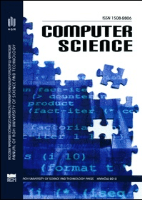
Computer Science-AGH
Transforming Research into Impactful SolutionsComputer Science-AGH, published by the AGH University of Science & Technology Press in Poland, is an esteemed open access journal that has been disseminating high-quality research since 2004. With ISSN 1508-2806 and E-ISSN 2300-7036, this journal focuses on a diverse range of areas within the computer science discipline, including but not limited to Artificial Intelligence, Computational Theory, Computer Graphics, and Networks. While it currently holds a Q4 ranking across several categories as of 2023, it actively promotes research that contributes to the academic community's understanding and evolution in the field. The journal's commitment to open access ensures that vital research is accessible to a wider audience, fostering collaboration and innovation. With its comprehensive focus and strategic publication goals, Computer Science-AGH plays a crucial role in advancing the frontiers of computer science research and education, making it an invaluable resource for researchers, professionals, and students alike.
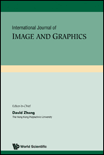
International Journal of Image and Graphics
Transforming Ideas into Stunning Visual RealitiesInternational Journal of Image and Graphics, published by World Scientific Publishing Co. Pte Ltd, serves as an essential platform for scholars and practitioners in the realms of Computer Graphics, Computer-Aided Design, and Computer Vision and Pattern Recognition. Established in 2001 and based in Singapore, this journal has become increasingly influential, with a reputation reflected in its Q3 and Q4 rankings across key categories in Scopus, highlighting its growing impact in the academic community. Open access options remain limited; however, the journal's commitment to disseminating high-quality research allows for a rich exchange of ideas among professionals and students alike. As the 2023 metrics indicate, contributions to the journal not only enhance individual academic portfolios but also promote advancements in image processing, fostering innovation and growth within the discipline until at least 2024. It is thus a vital resource for anyone looking to deepen their knowledge and understanding of contemporary trends and technologies in image processing and related fields.

IMAGING SCIENCE JOURNAL
Exploring New Dimensions in Visual TechnologyImaging Science Journal, published by Taylor & Francis Ltd, serves as a vital resource for researchers and professionals in the fields of computer vision, pattern recognition, and media technology. With an ISSN of 1368-2199 and an E-ISSN of 1743-131X, this journal has been fostering scholarly dialogue since its inception in 1997, with a converged content offering extending through 2024. Its categorization in Quartile 4 in Computer Vision and Pattern Recognition and Quartile 3 in Media Technology highlights its relevance and contributions to emerging trends in these domains. Although it ranks 36th in the Engineering - Media Technology category and 96th in Computer Science - Computer Vision and Pattern Recognition, its innovative research and insights continue to attract the attention of scholars dedicated to advancing knowledge at the intersection of imaging technologies. Offering versatile access options, this journal is essential for students, researchers, and professionals aiming to stay informed and engaged in the rapidly evolving landscape of imaging science.

VISUAL COMPUTER
Advancing the Frontiers of Visual ComputingVISUAL COMPUTER is a prestigious journal published by Springer, focusing on the dynamic fields of computer graphics, computer-aided design, computer vision, and software. Established in 1985, this interdisciplinary journal serves as a vital platform for sharing innovative research, applications, and developments crucial to the advancement of visual computing technologies. With a notable Q2 ranking in various categories, including Computer Graphics and Computer-Aided Design, and Computer Vision and Pattern Recognition, VISUAL COMPUTER demonstrates a solid impact within the academic community, marked by its Scopus rankings that reflect its significant contributions to the field. While the journal does not offer open access, it remains a reliable source of high-quality content for researchers, professionals, and students eager to stay abreast of emerging trends and techniques, ultimately fostering collaboration and knowledge exchange within the rapidly evolving landscape of visual computing.
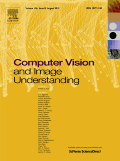
COMPUTER VISION AND IMAGE UNDERSTANDING
Transforming Pixels into KnowledgeCOMPUTER VISION AND IMAGE UNDERSTANDING is a leading academic journal published by Academic Press Inc, Elsevier Science, dedicated to the advancement of the fields of computer vision, image understanding, and pattern recognition. Since its inception in 1993, this esteemed publication has garnered a reputation for excellence, achieving a remarkable Q1 ranking in the categories of Computer Vision and Pattern Recognition, Signal Processing, and Software as of 2023. With its robust impact factor and high visibility in the scientific community—ranking #22 out of 106 in Computer Vision and Pattern Recognition and #27 out of 131 in Signal Processing—this journal serves as a vital resource for researchers, professionals, and students looking to explore and contribute to state-of-the-art developments. Although it does not operate under an Open Access model, its rigorous peer-reviewed content ensures quality and relevance in a rapidly evolving technological landscape. The journal’s commitment to fostering innovation makes it an essential tool for anyone engaged in the study and application of computer vision technologies.

Computational Visual Media
Unlocking the potential of visual media through technology.Computational Visual Media, published by TSINGHUA UNIVERSITY PRESS, is a premier open access journal dedicated to advancing the fields of Artificial Intelligence, Computer Graphics and Computer-Aided Design, and Computer Vision and Pattern Recognition. Since its inception in 2015, it has established a robust position within the academic community, consistently achieving Q1 rankings across its categories as of 2023. With exceptional Scopus rankings, including a remarkable percentile standing in the top 10% globally, the journal serves as a vital resource for researchers, professionals, and students eager to explore cutting-edge methodologies and technologies in computational visual media. The journal’s open access format enhances accessibility, fostering global collaboration and dissemination of knowledge, making it an indispensable platform for those at the forefront of innovation in these dynamic fields. The journal is headquartered in Beijing, China, and aims to publish high-quality research that not only contributes to theoretical advancements but also addresses practical challenges within computational visual technologies.
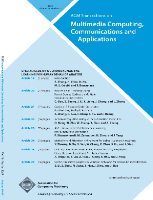
ACM Transactions on Multimedia Computing Communications and Applications
Transforming Ideas into Multimedia Solutions.ACM Transactions on Multimedia Computing, Communications, and Applications is a premier journal published by the Association for Computing Machinery (ACM), pivotal in the field of Computer Networks and Communications and Hardware and Architecture. With an impressive 2023 impact factor, this journal holds a commendable Q1 ranking in both its categories, solidifying its significance within the research community. The journal welcomes high-quality research that explores innovative technologies and methodologies in multimedia computing and communication as well as applications that enhance user experiences. While it remains a subscription-based journal, it provides unparalleled access to groundbreaking studies, serving as an essential resource for researchers, professionals, and students seeking to stay at the forefront of multimedia technologies. Spanning from 2005 to 2024, the journal offers a rich repository of knowledge and is committed to fostering advancements in the multimedia domain.
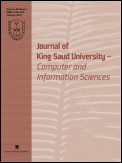
Journal of King Saud University-Computer and Information Sciences
Empowering Innovation in Computing and Information SciencesJournal of King Saud University-Computer and Information Sciences, published by ELSEVIER, is a prestigious open-access journal focusing on the rapidly evolving fields of computer science and information technology. Since its inception in 1996, this journal has provided a platform for high-quality research and innovative ideas, promoting the dissemination of knowledge to a global audience. With a remarkable impact factor and ranked Q1 in the Computer Science (miscellaneous) category as of 2023, it stands among the top 11% of journals in its field, reflecting its commitment to excellence and relevance. The journal proudly carries the ISSN 1319-1578 and E-ISSN 2213-1248, and it is based in Saudi Arabia while being part of a global academic network. With a Scopus rank of #26 out of 232 in general computer science, the Journal of King Saud University-Computer and Information Sciences is an essential resource for researchers, professionals, and students seeking to stay at the forefront of technological advancement. As it continues to thrive through 2024, it invites contributions that will shape the future of computing and information sciences.
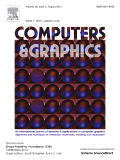
COMPUTERS & GRAPHICS-UK
Pioneering Insights in Human-Computer InteractionCOMPUTERS & GRAPHICS-UK is a premier journal dedicated to the fields of computer graphics, computer-aided design, and human-computer interaction. Published by Pergamon-Elsevier Science Ltd, this esteemed journal has been a critical resource for researchers and professionals since its inception in 1975. With an impressive impact factor and ranked in the second quartile for key disciplines such as Computer Vision and Pattern Recognition, and Engineering (Miscellaneous), it provides a platform for high-quality, peer-reviewed research spanning theoretical advancements, innovative technologies, and practical applications. Notable for its interdisciplinary approach, the journal also embraces contributions that bridge diverse areas within computer science. Although lacking Open Access options, readers can benefit from its rich archive and cross-disciplinary insights, making it essential for anyone looking to advance their knowledge and practice in computer graphics and related fields. The journal is located in the United Kingdom, at The Boulevard, Langford Lane, Kidlington, Oxford OX5 1GB, and continues to be a cornerstone for scholarly exchange and advancement in the digital visualization domain.
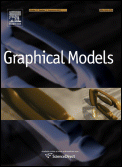
GRAPHICAL MODELS
Elevating the Science of Visualization and SimulationGRAPHICAL MODELS, published by Academic Press Inc Elsevier Science, is a cutting-edge journal in the fields of Computer Graphics and Computer-Aided Design, Geometry and Topology, Modeling and Simulation, and Software. Since becoming Open Access in 2023, it has expanded its reach, facilitating scholarly communication and encouraging a diverse range of submissions. Operating from the heart of San Diego, United States, the journal has established itself with an impressive ranking, including a Q2 category in multiple disciplines and a notable position in Scopus, particularly in Geometry and Topology, where it ranks #8 out of 106. This journal aims to provide a comprehensive platform for innovative research and application-focused studies, attracting the attention of researchers, professionals, and students who are keen to explore the dynamic landscape of graphical models and their implications across various scientific and engineering domains. With its commitment to publishing high-quality research, GRAPHICAL MODELS is a pivotal resource for anyone interested in advancing the frontiers of graphical representations and simulations.